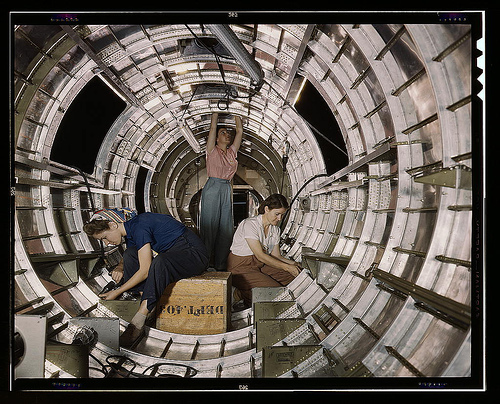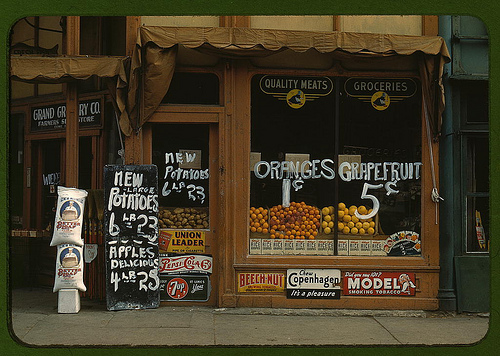And they’ve put up some really neat color photos from the 40’s. Here’s a sample:

“Women workers install fixtures and assemblies to a tail fuselage section of a B-17F bomber at the Douglas Aircraft Company, Long Beach, Calif.”

Storefront in Lincoln, Neb.
They put them on flickr so that they can be tagged and organize the photos by us:
As a communicator, I want to expand the reach of the Library and access to our magnificent collections as far and wide as possible. Of course, there are only so many hours in the day, so many staff in Library offices and so many dollars in the budget. Priorities have to be chosen that will most effectively advance our mission.
That’s why it is so exciting to let people know about the launch of a brand-new pilot project the Library of Congress is undertaking with Flickr, the enormously popular photo-sharing site that has been a Web 2.0 innovator. If all goes according to plan, the project will help address at least two major challenges: how to ensure better and better access to our collections, and how to ensure that we have the best possible information about those collections for the benefit of researchers and posterity. In many senses, we are looking to enhance our metadata (one of those Web 2.0 buzzwords that 90 percent of our readers could probably explain better than me).
The project is beginning somewhat modestly, but we hope to learn a lot from it. Out of some 14 million prints, photographs and other visual materials at the Library of Congress, more than 3,000 photos from two of our most popular collections are being made available on our new Flickr page, to include only images for which no copyright restrictions are known to exist.
The real magic comes when the power of the Flickr community takes over. We want people to tag, comment and make notes on the images, just like any other Flickr photo, which will benefit not only the community but also the collections themselves. For instance, many photos are missing key caption information such as where the photo was taken and who is pictured. If such information is collected via Flickr members, it can potentially enhance the quality of the bibliographic records for the images.
(via)
